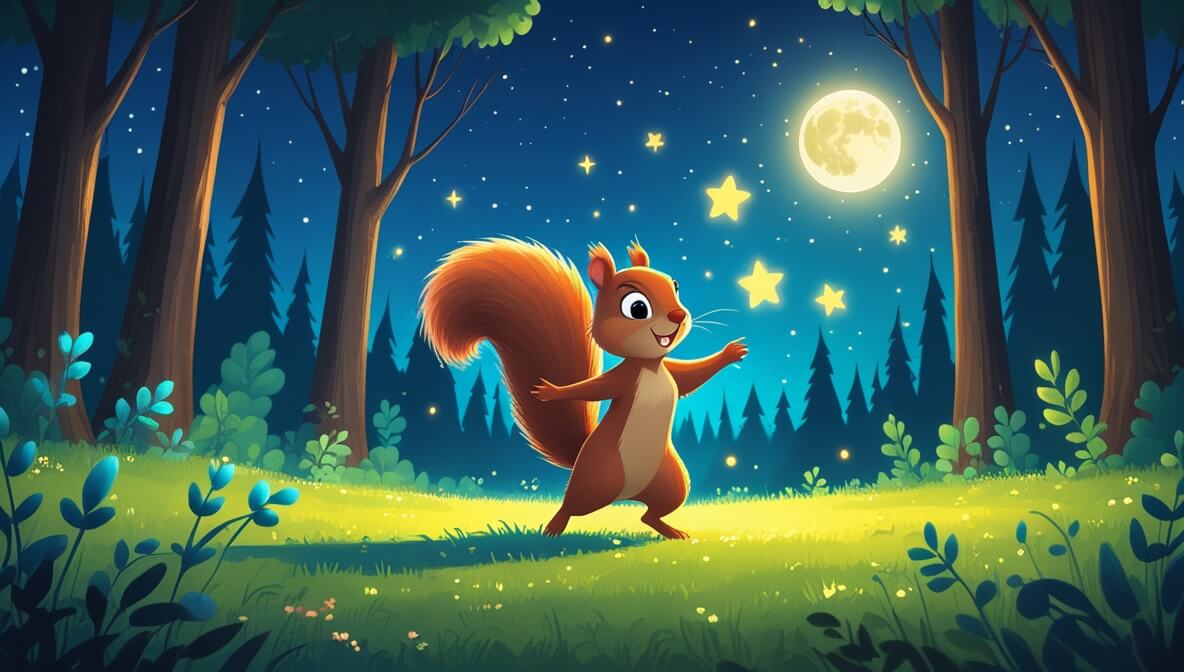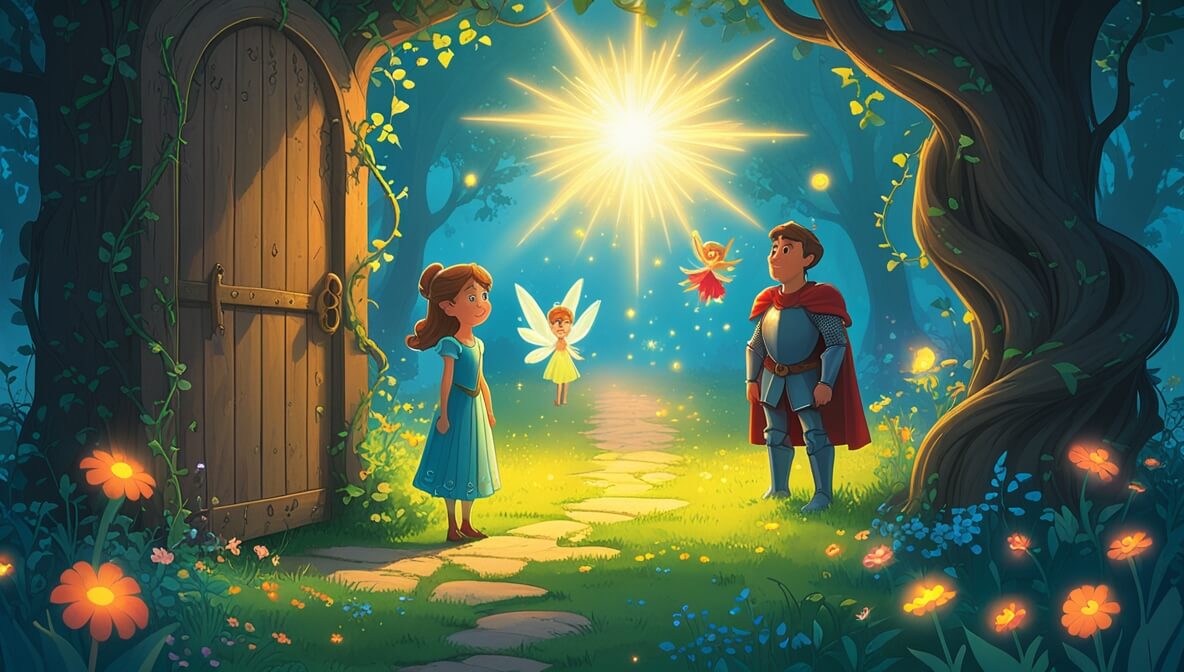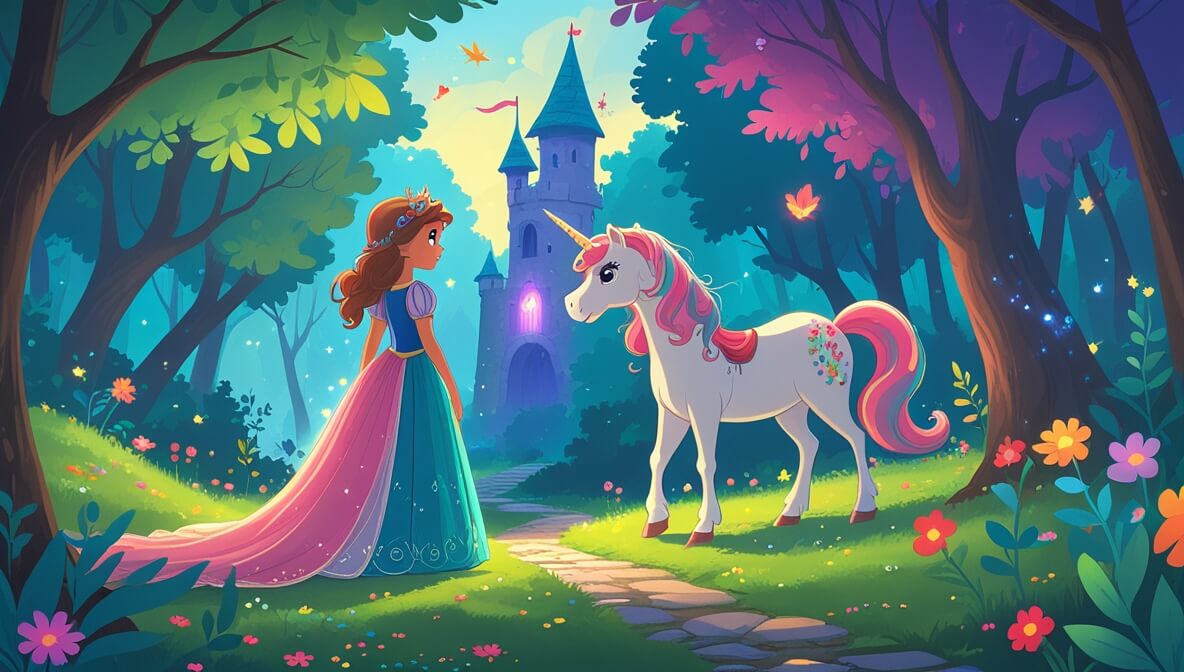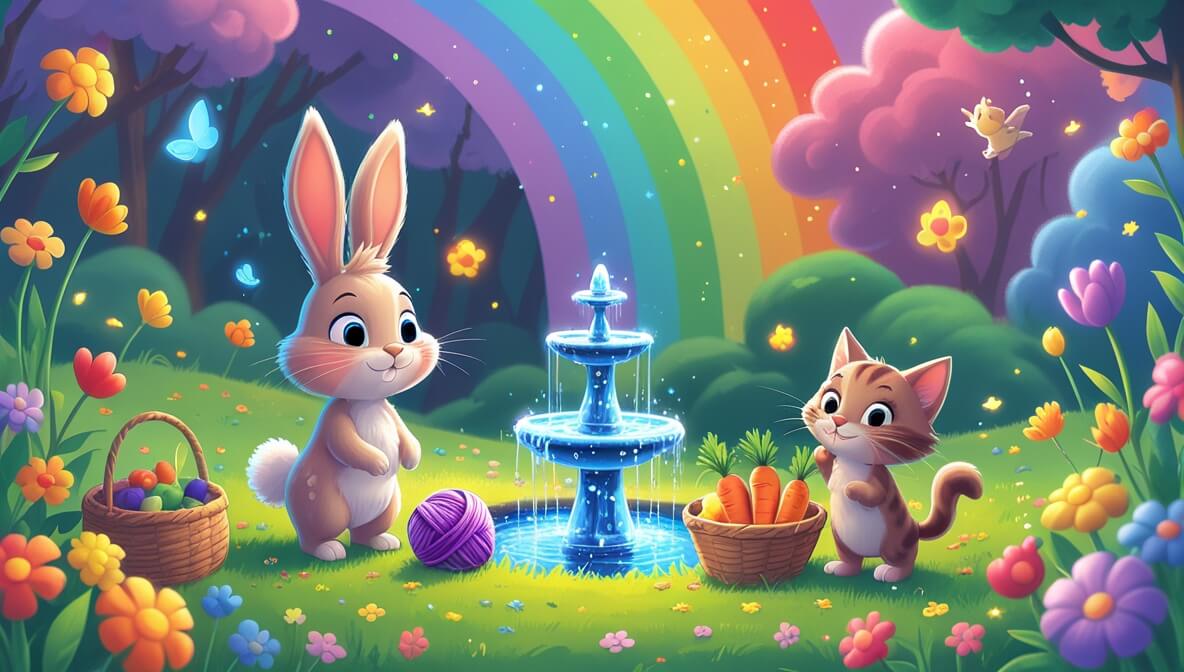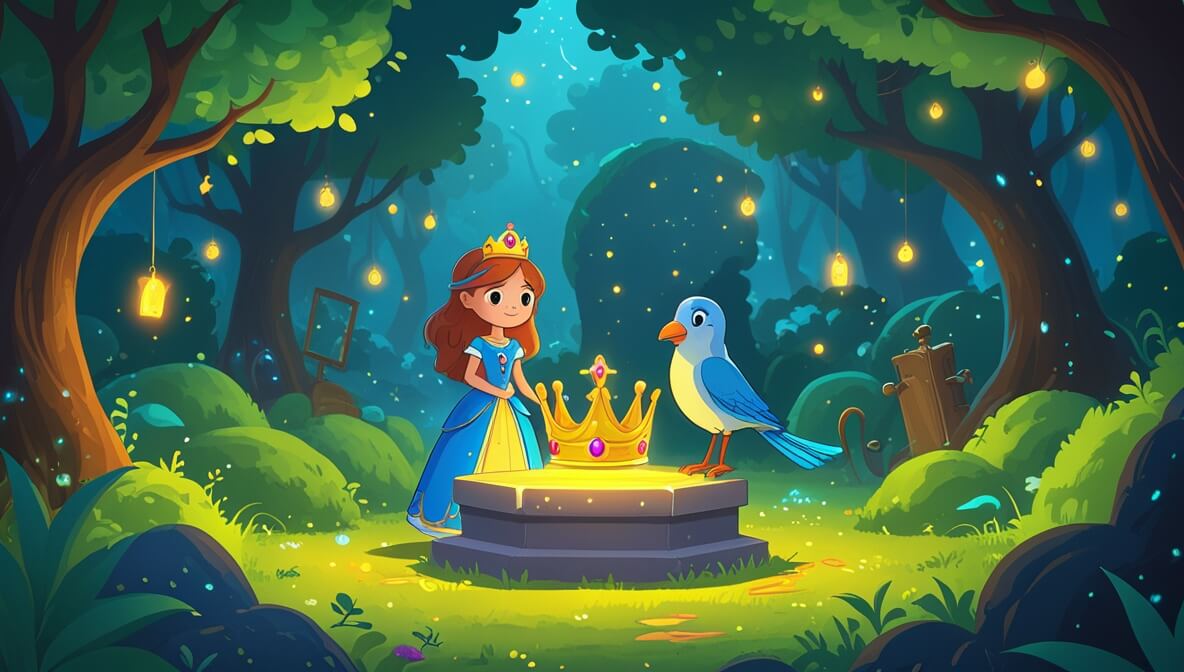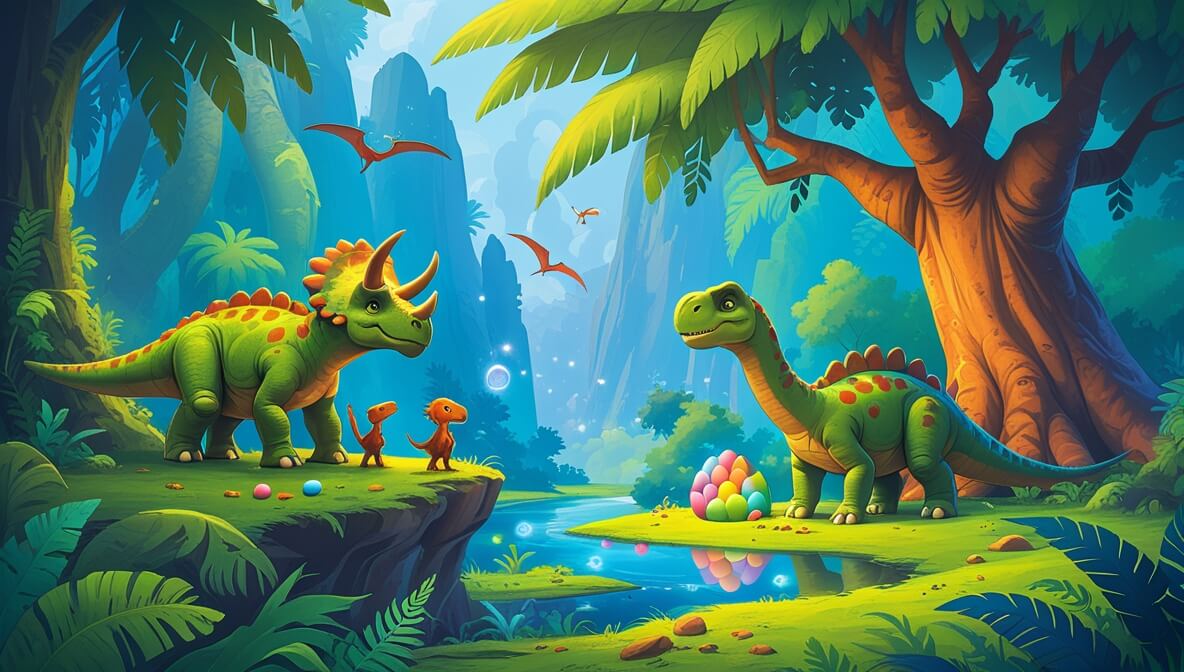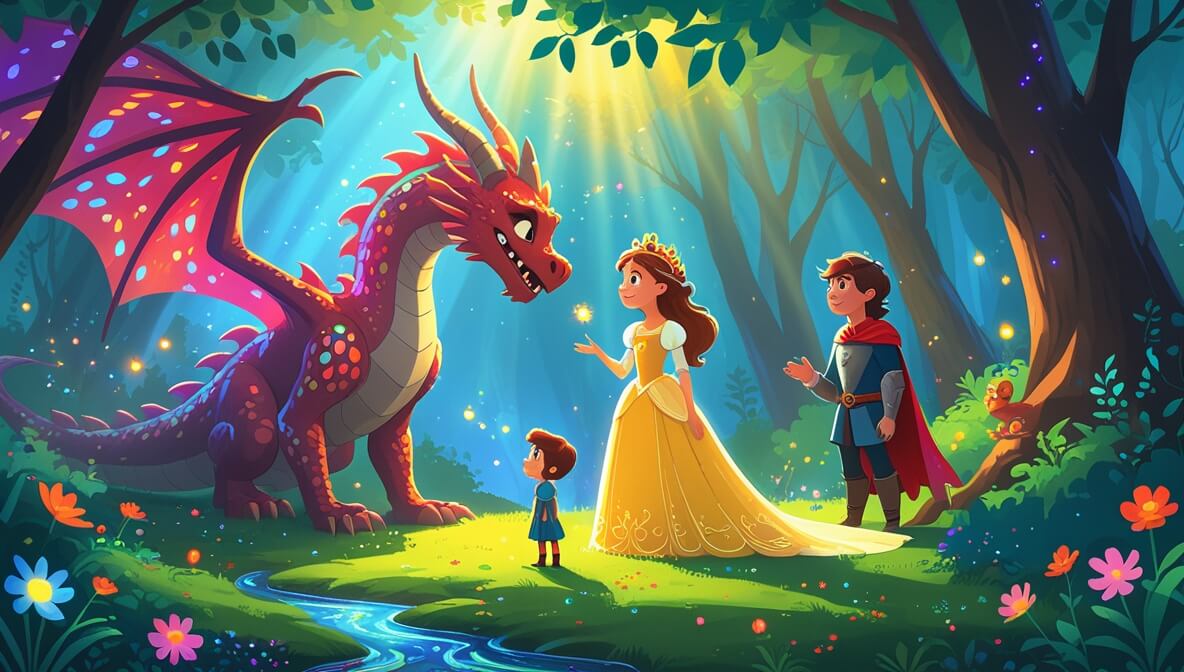In a cozy little village, a curious squirrel and a gentle moonbeam discover the magic of friendship under a starry sky.
Age Recommendation
0 – 4 years
Characters
Characters:
- Nibble (a curious, playful squirrel)
- Moonbeam (a gentle, glowing moonbeam)
Story
Once upon a time, in a soft and warm forest, there lived a little squirrel named Nibble. Nibble loved to explore and play, always searching for new friends to share his adventures. One night, as the stars twinkled brightly, Nibble noticed something magical. It was a beautiful, glowing moonbeam dancing through the trees.
The Moonbeam’s Surprise
Nibble was curious and scampered closer. “Hello, Moonbeam,” he said shyly. The moonbeam shimmered and replied, “Hello, Nibble. Would you like to play?” Nibble’s eyes sparkled with joy, and he nodded eagerly. Together, they jumped and twirled, creating patterns of light and shadow on the forest floor.
Starry Sky Adventure
As they played, Nibble and Moonbeam discovered a hidden path leading to a quiet meadow. The moon shone brightly, and the stars seemed to wink at them. “Look, Moonbeam!” Nibble chirped. “The stars are our friends too!” The moonbeam glowed brighter, and they both laughed, feeling the warmth of friendship.
The Magic of Friendship
After their adventures, Nibble felt sleepy. “Thank you, Moonbeam,” he whispered. “I had so much fun.” The moonbeam wrapped Nibble in a gentle glow, like a soft hug. “Goodnight, Nibble,” the moonbeam whispered back. And with that, Nibble fell asleep, dreaming of more magical nights with his new friend.
The end.
Moral of the Story
The story teaches us that friendships can be found in the most unexpected places. By being open and curious, we can discover new friends and create joyful memories together.
Questions to Think About
- Why did Nibble want to be friends with Moonbeam?
- What do you think made Moonbeam special?
- How do you feel when you make a new friend?
- What other animals could Nibble meet in the forest?
- What games would you like to play with a moonbeam?
Do You Know
- Moonbeams are the light we see from the moon at night. They can make everything look magical.
- Squirrels use their tails for balance when they jump from tree to tree.
Word Explorer
- Moonbeam: A ray of light from the moon.
- Twinkle: To shine with a flickering or sparkling light.
- Meadow: A field with grass and flowers.
Emotions in the Story
- Curiosity: Nibble felt curious when he saw the moonbeam.
- Joy: Nibble and Moonbeam felt joy playing together.
- Friendship: Nibble felt friendship when Moonbeam hugged him with light.
Color Your Scene
Imagine Nibble and Moonbeam playing in the meadow under the starry sky. Picture the soft glow of the moonbeam and the sparkling stars. Draw the forest with its tall, dark trees, and don’t forget to add Nibble’s bushy tail and the bright moonlight!
Parents’ Corner
This story is a lovely way to introduce children to the concepts of friendship and curiosity. It encourages them to be open to new experiences and to explore the world around them. Discuss with your child how friendships can form in unexpected places, and that by being curious and kind, they can meet new friends and create happy memories. Remind them that every friend brings a new adventure, just like Nibble and Moonbeam discovered in their magical night.

